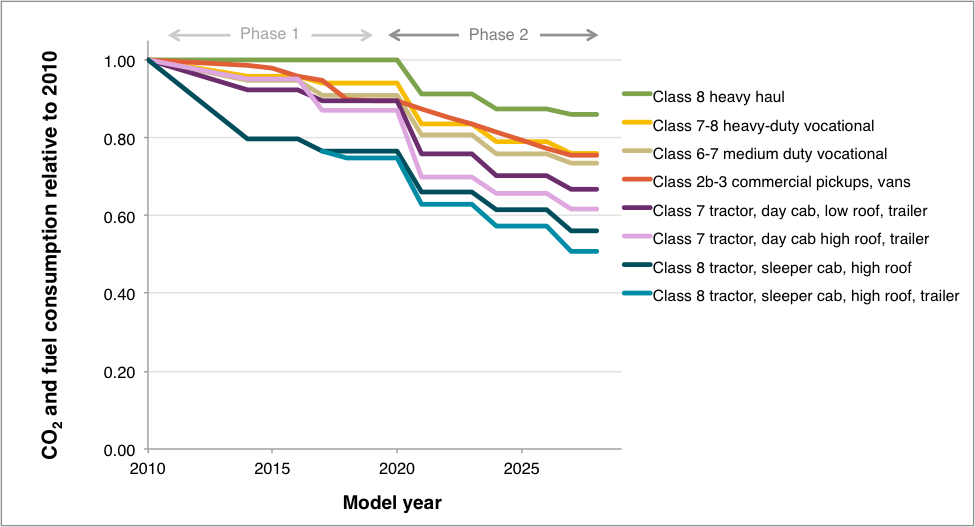Policy update
U.S. efficiency and greenhouse gas emission regulations for model year 2018-2027 heavy-duty vehicles, engines, and trailers
On August 16, 2016 the U.S. Environmental Protection Agency and the National Highway Traffic Safety Administration released the final rulemaking for heavy-duty vehicle fuel-efficiency and greenhouse gas standards. The new standards, which will take effect in 2018 and run through 2027, are Phase 2 of the Obama administration’s effort to improve fuel efficiency and reduce carbon emissions from trucks and buses. This policy update provides a summary of the finalized standards for the various regulatory categories and the estimated costs and benefits of the rule.
The structure of the Phase 2 regulation is similar to Phase 1, with regulatory standards for tractors, commercial pickups and vans, vocational vehicles, and the engines used in tractors and vocational vehicles. In addition, the Phase 2 rule incorporates one new major category: trailers. The regulatory targets for Phase 2 are shown in the figure below and also include impacts of the Phase 1 regulation. Combined, the Phase 1 and 2 standards will improve the fuel efficiency of commercial vehicles between roughly 25% and 50% compared to a 2010 baseline. The Phase 2 rule continues to drive the development and deployment of cost-effective technologies, and the estimated payback times for tractor-trailers, heavy-duty pickup trucks, and vocational vehicles are two, three, and four years, respectively.

The agencies estimate that the Phase 2 standards will yield over $200 billion in net savings for the vehicles affected by the rule. Fuel savings will be over half a million barrels of oil per day in 2035, and by 2050, when the rule is fully phased-in, these savings increase to over 800,000 barrels per day. Together with Phase 1, the increased efficiency of heavy-duty trucks and buses will cut fuel use by over one-third by 2050.
